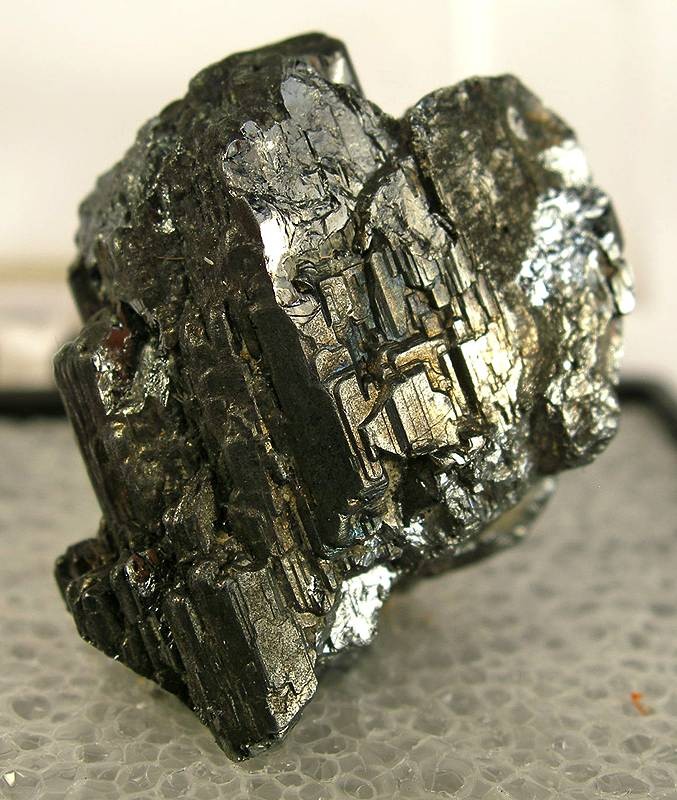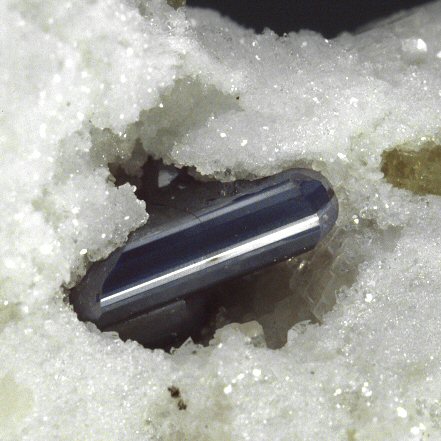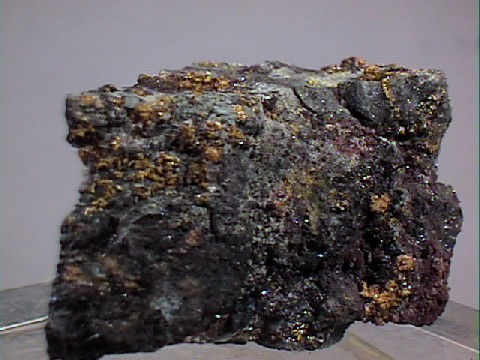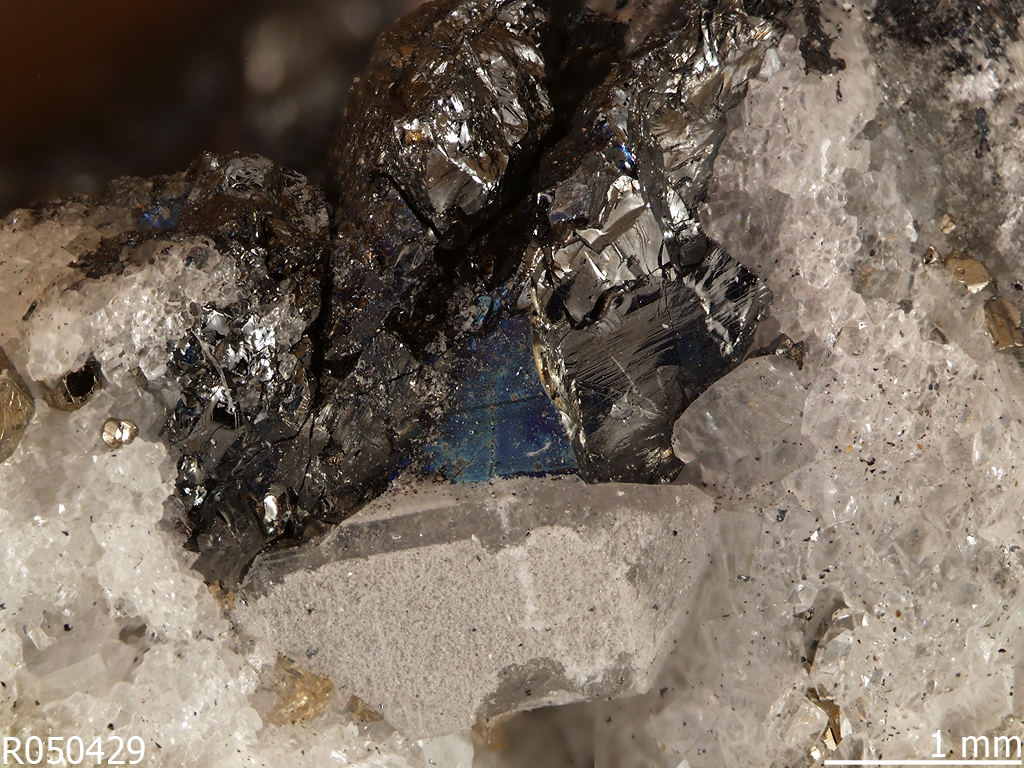Baumhauerite
- IMA 1988-061
- Pb3As4S9
- Oxide formula: 3 PbS · 2 As2S3
Baumhauerit is a rarely occurring mineral from the mineral class of " sulfides and sulfosalts ". It crystallizes in the triclinic crystal system with the chemical composition Pb3As4S9, is so chemically speaking, a complex lead -arsenic sulfide, which is counted among the sulfosalts.
Baumhauerit is opaque in every shape and usually developed only small, prismatic to tabular crystals and striped, but also grained mineral aggregates of lead - up steel gray color with chocolate brown stroke color. Fresh samples exhibit a strong metallic luster. Unprotected crystal faces run but after a while colorful colored iridescent.
Etymology and history
The Baumhauerit was first discovered in the pit Lengenbach / Binn valley in the Swiss canton of Valais and described in 1902 named by RH Solly, of the minerals by the professor of mineralogy at the University of Fribourg ( Switzerland ) Heinrich Adolph tree Hauer ( 1848-1926 ).
The Natural History Museum Vienna in 1903 bought a piece of overgrown Baumhaueritkristallen that measure 6x2, 5x2, 3cm. Today, even from a crystals are cm size already decent finds.
Classification
In the now outdated but still in use 8th edition of the mineral classification by Strunz the Baumhauerit belonged to the mineral class of " sulfides and sulfosalts " and then to the Department of " thio " where he along with Baumhauerit -2a and Robinsonit the unnamed group II / E .24 was formed.
The 9th edition used since 2001 and valid by the International Mineralogical Association (IMA ) of the Strunz'schen Mineral classification assigns the Baumhauerit also in the class of " sulfides and sulfosalts ," there, however, in the newly defined division of " sulfosalts with SnS as a model " a. This department is also further divided according to the conditions prevailing in the interconnect metals, so that the mineral is found according to its composition in the subsection "Only with lead ( Pb) ", where it together with Baumhauerit -2a and Baumhauerit II (with yet questionable status ) the " Baumhauerit group " with the system no. 2.HC.05b forms.
The mainly common in English-speaking classification of minerals according to Dana assigns to the category of " sulfides and sulfosalts " and there in the department of " thio " one. Here he is with Baumhauerit - 2a in the unnamed group 03:06:13 within the subdivision " sulfosalts with the ratio 2.0 < z / y < 2.49, and the composition (A ) i ( A2 ) j [ Bycz ], A = metals, semimetals B =, C = non-metals to find. "
Education and Locations
Baumhauerit formed hydrothermally in dolomite rock. Accompanying minerals occur next dolomite and Baumhauerite -2a among others still different lead Sulfarsenide, pyrite and realgar.
A rare mineral formation Baumhauerit previously could (as of 2012 ) can be detected only at a few localities. Are considered to be known as 15 localities, the type locality pit Lengenbach in the Binn Valley is the only known locality in Switzerland. However, this location is also known for its rich finds of well -formed crystals of up to 2.5 cm in diameter.
In Austria, the mineral previously occurred in the gypsum mine near Moosegg / Lauperswil (Salzburg ) and possibly also at the Haring ditch in the community Oberort - Tragöss (Styria ) on.
Other localities include the " Beltana Mine" at Puttapa in the Flinders Ranges known as Australian mountain range, Huntingdon and Marathon in the Canadian province of Ontario, the " Zareh Shuran Mine" in the Iranian province of West Azerbaijan, the " Okoppe Mine" on the Japanese Shimokita Peninsula, the antimony - mercury deposit Khaidarkan ( Chaidarkan ) in the Ferghana Valley in Kyrgyzstan as well as in the " Perseverance Mine" in the Yukon - Koyukuk Census Area (Alaska), the " Zuni Mine" ( Zuni Mine) on Anvil Mountain ( Colorado), at Sterling Hill (New jersey ) and the " Keystone Mine" at Birmingham ( Pennsylvania).
Crystal structure
Baumhauerit crystallizes in the triclinic space group P1 ( Raumgruppen-Nr. 2) with the lattice parameters a = 22.80 Å; b = 8.36 Å; c = 7.89 Å; α = 90 °; β = 97.3 ° and γ = 89.9 °, and four formula units per unit cell.










